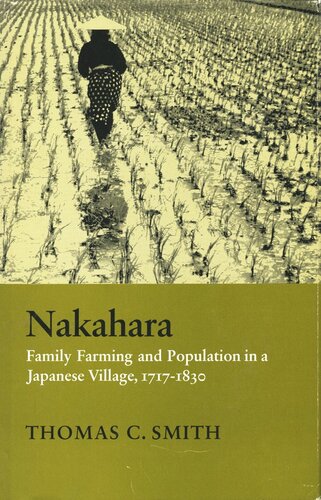

Most ebook files are in PDF format, so you can easily read them using various software such as Foxit Reader or directly on the Google Chrome browser.
Some ebook files are released by publishers in other formats such as .awz, .mobi, .epub, .fb2, etc. You may need to install specific software to read these formats on mobile/PC, such as Calibre.
Please read the tutorial at this link: https://ebookbell.com/faq
We offer FREE conversion to the popular formats you request; however, this may take some time. Therefore, right after payment, please email us, and we will try to provide the service as quickly as possible.
For some exceptional file formats or broken links (if any), please refrain from opening any disputes. Instead, email us first, and we will try to assist within a maximum of 6 hours.
EbookBell Team

4.7
56 reviewsHistorians have long been intrigued by Japan's static national population during the eighteenth and early nineteenth centuries, when the output of the economy was almost certainly growing. Was population held in check by high mortality or low fertility, or by some combination of the two? The author of this monograph suggests an answer through analysis of the population and tax registers of the village of Nakahara between 1717 and 1830. He finds that both mortality and registered fertility in Nakahara were strikingly low by comparison to eighteenth-century European communities. The causes of low mortality are uncertain, but low registered fertility was mainly the result of infanticide. The author shows, surprisingly, that infanticide was not primarily a function of poverty or the desperation of the moment but was practiced as a form of family planning, resulting from a clear understanding of the relationship between farming efficiency and family size and composition in an intensely competitive agrarian economy. The final chapter discusses the extent to which Nakahara may have been representative of rural Japan.